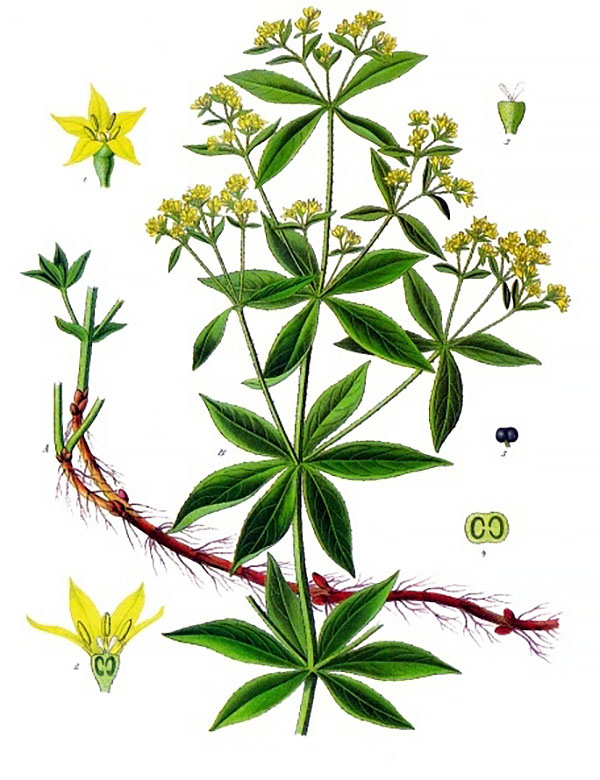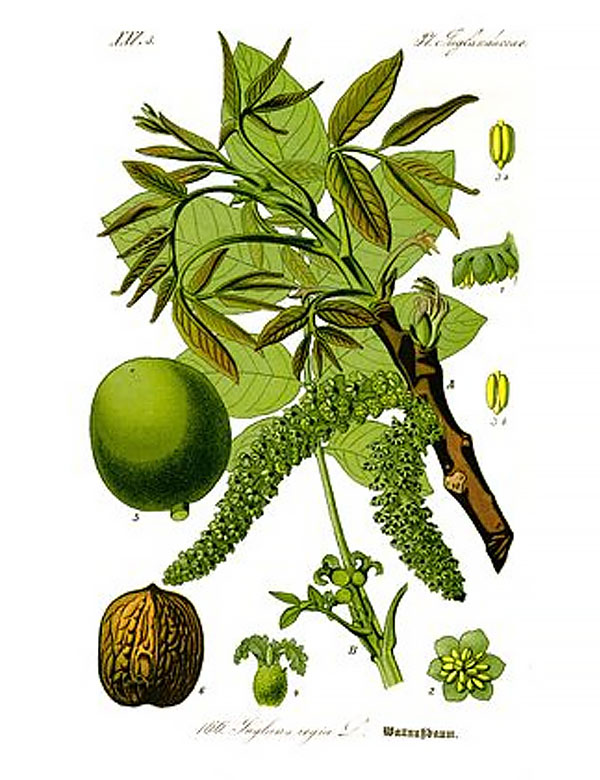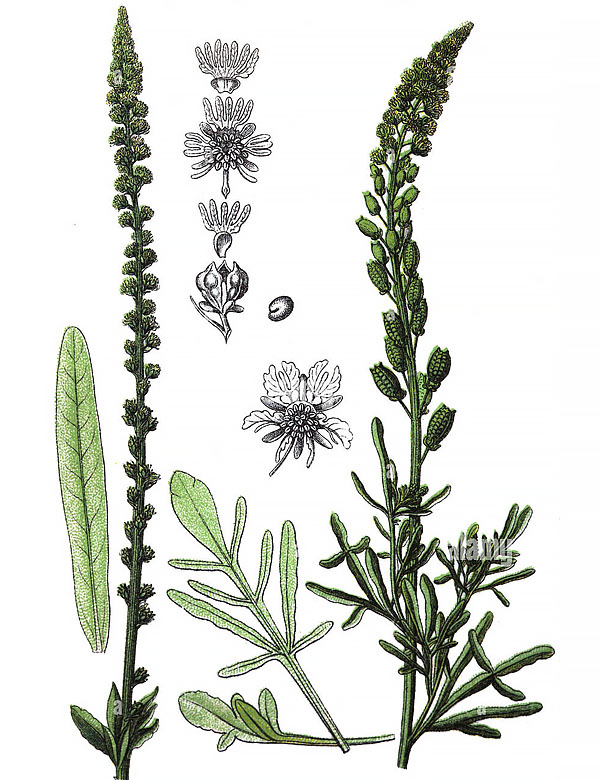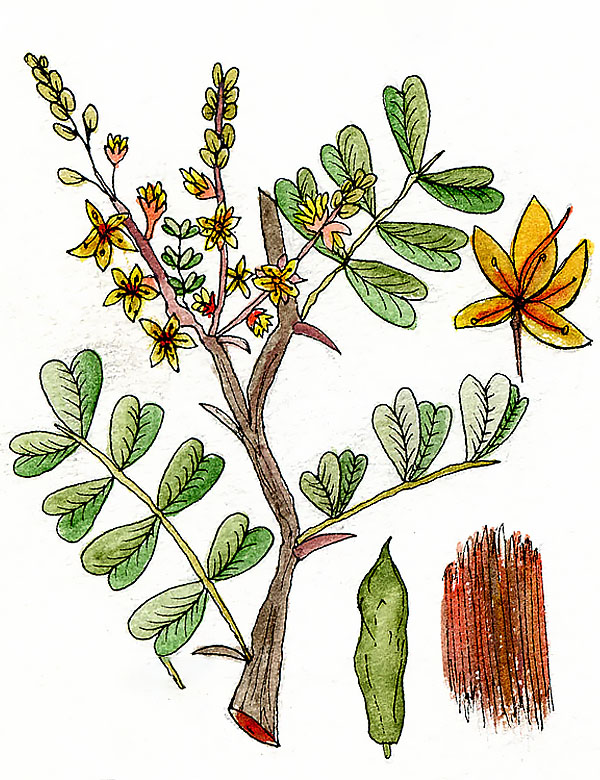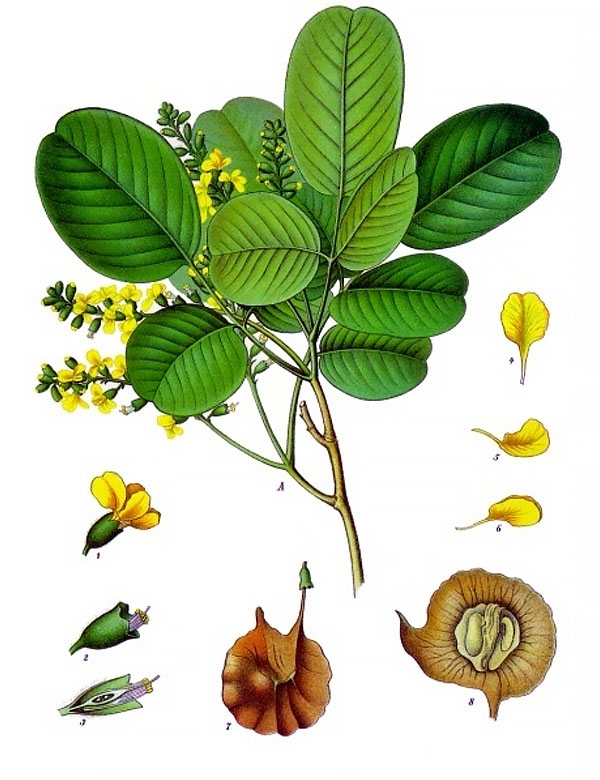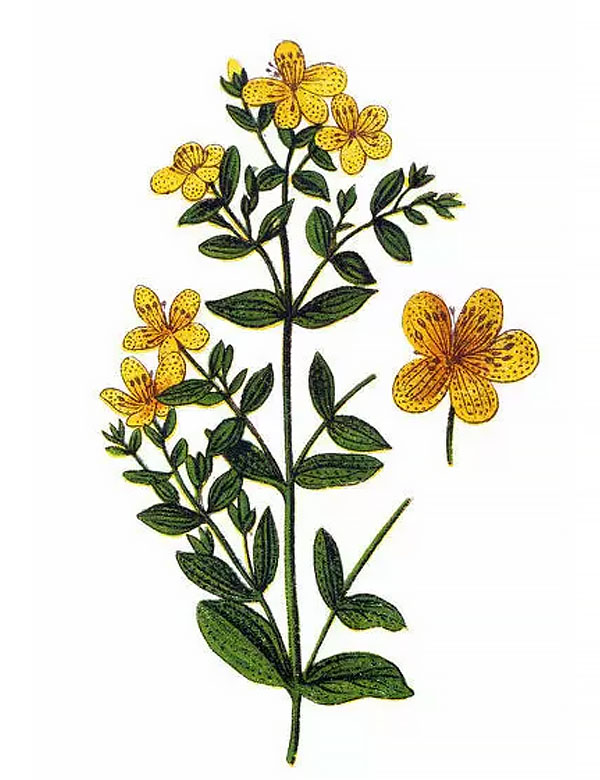4. BioChromes¶
This week was dedicated to what Cecilia and Fabricademy in general call BioChromes: pigments produced by living organisms, as opposed to mineral and synthetic color sources. Unlike synthetic dyes, which allow for a very controlled process and consistent results, BioChromes are hard to tame and often give unexpected results, with colors that can grow, fade and mutate with time.

During this week, we focused on natural, plant-based dyes, as we were lucky enough to have Charlotte from MARGA accompany us through a 3-day workshop where we experimented with many kind of plants and techniques. We didn't experiment much with other natural color sources, but I'll mention some of them at the bottom of this page.
Inspiration¶
art pieces that involve living colors
presentation Marga
Theory¶
Dyeing a fabric consists mostly of two essential steps:
- Applying mordant to the fabric
- Applying the coloring molecules to the fabric

Mordant¶
Unless we're aiming for ephemeral dyes, we'll usually want the color to stick to the fiber and resist to the fading that can occur with time, rubbing, or sun exposure. Plant colors can be more or less stable, but most of them will need help to hold on to the fibers. For this, we use what's called a mordant1.
Mordanting (applying mordant to the fabric) is usually done with alum, in the form of potassium alum, by heating the fabric in an alum bath. Alum is a mineral and can be bought in crystals, but can also be found in some plants, such as lycopodes, symplocos or prêle and extracted through a decoction.
Mordanting can also be done with iron, in the form of ferrous sulphate. While alum intensifies the color, iron darkens it, and can be used to create deep greys and blacks. However it is not recommended to use iron on animal fibers such as wool and silk because it damages the fibers. Other metals can be used as mordants, such as copper (which is toxic, so not used as much as alum and iron).
Coloring Molecules¶
Colors are everywhere in nature. Coloring molecules can be found in a wide range of living organisms and inorganic compounds:
| Natural Color Sources | ||||||
|---|---|---|---|---|---|---|
| Organic | Inorganic | |||||
| Vegetal | Animal | Fungal | Bacterial | Mineral | ||
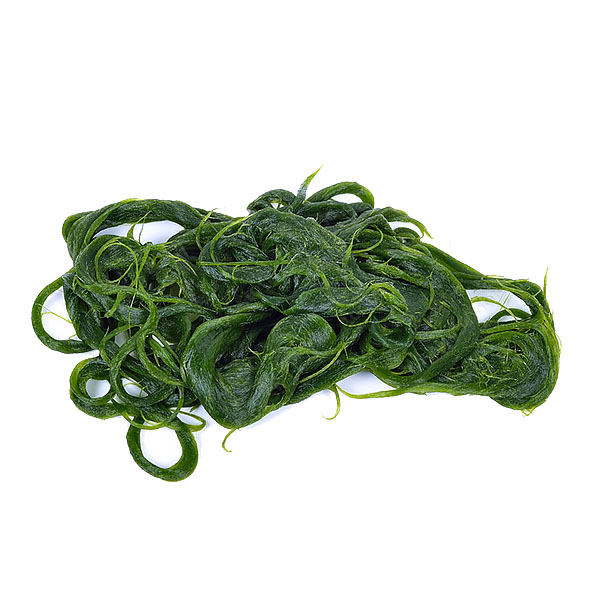 Algae |
 Bark |
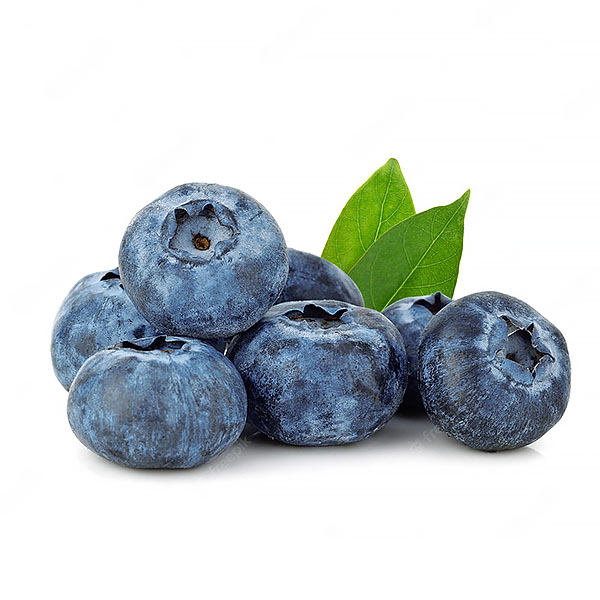 Berries |
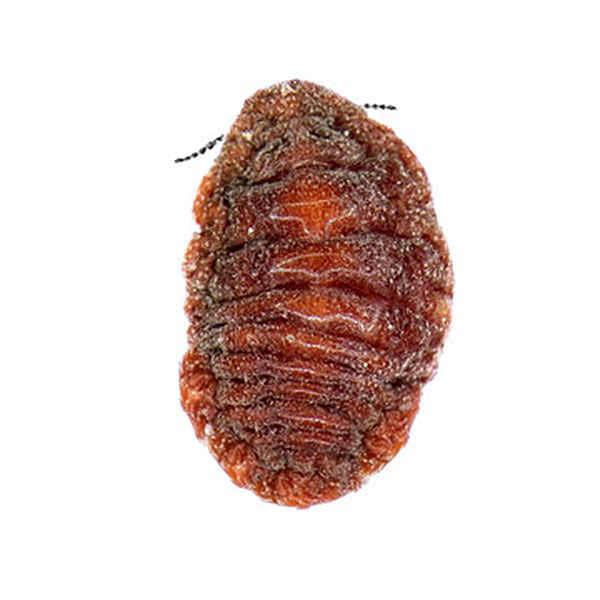 Insects |
 Muhsrooms |
 Bacteria |
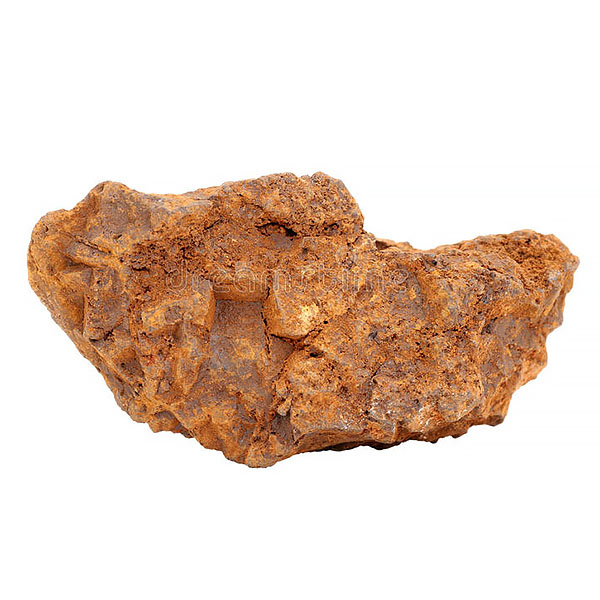 Metal |
 Flowers |
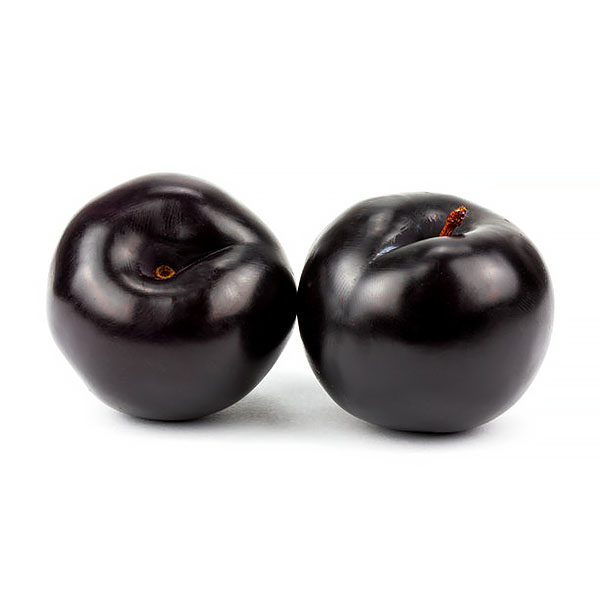 Fruit |
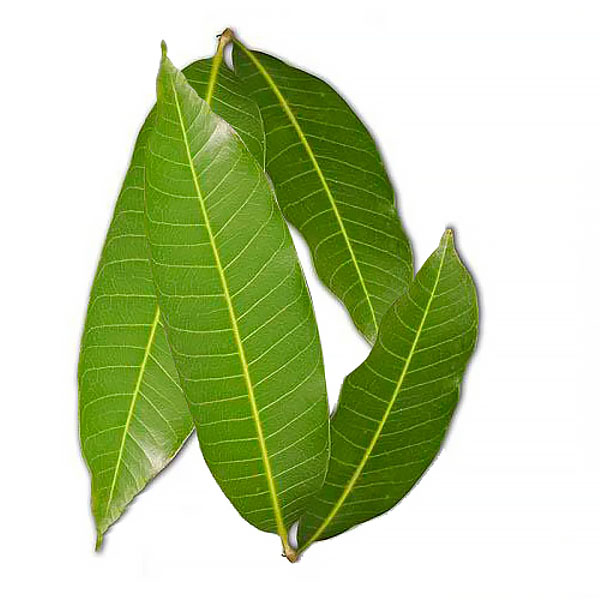 Leaves |
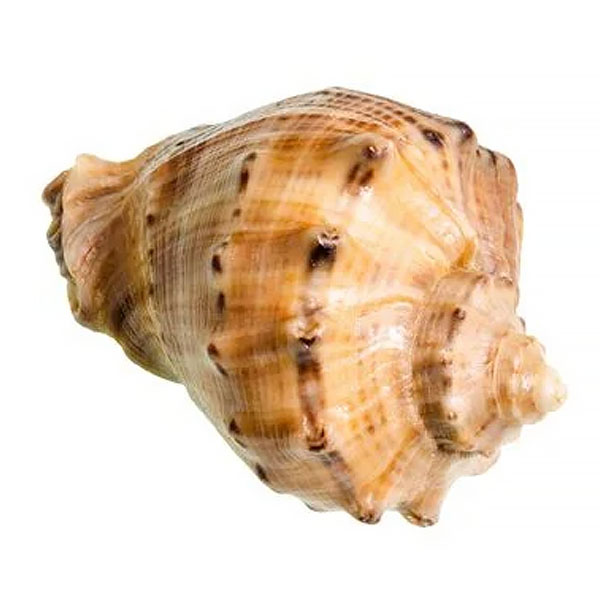 Mollusks |
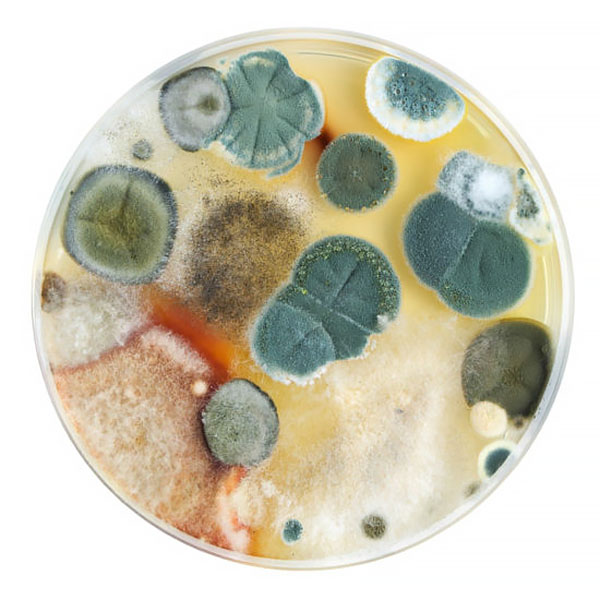 Mold |
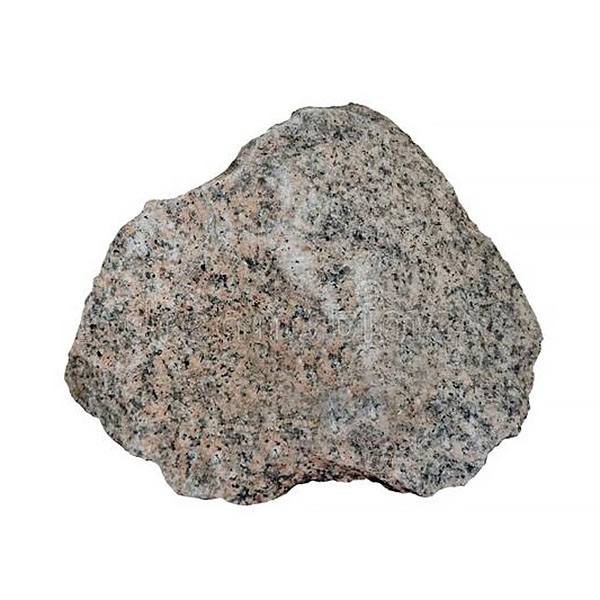 Rocks |
|
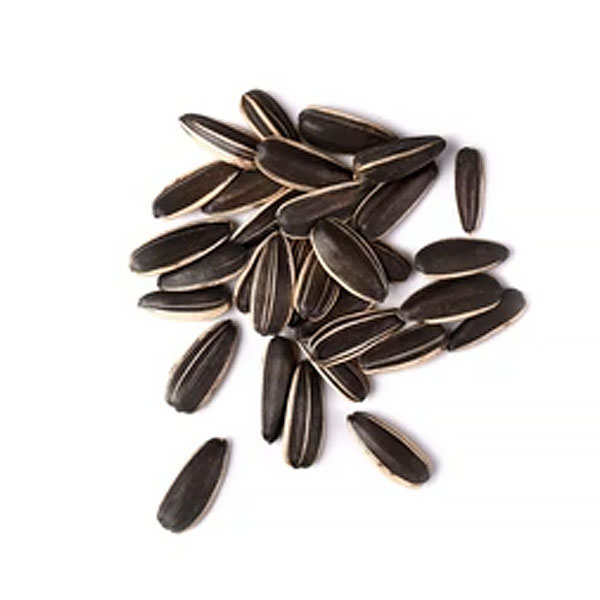 Seeds |
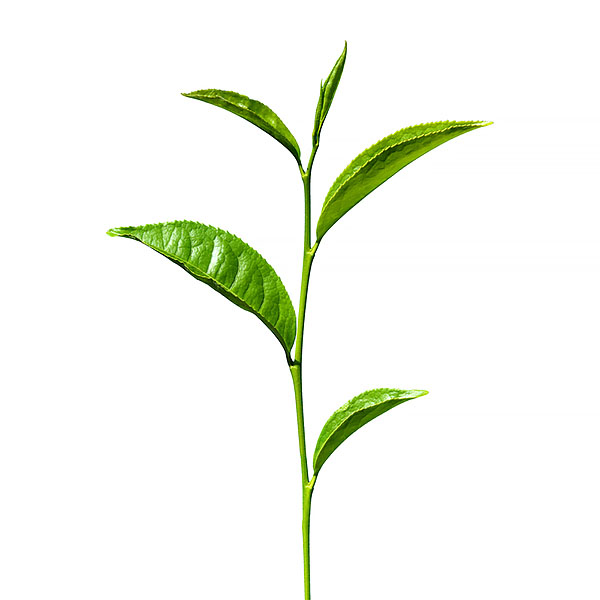 Stems |
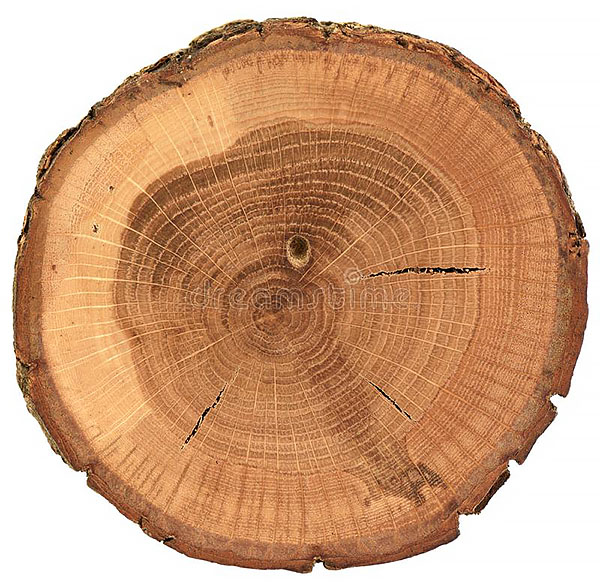 Wood |
||||
During this week, we focused almost exclusively on tinctorial plants. Plant-based natural dyes can create a suprising variety of colors, and they can be used for fabric, cosmetics, hair, and many others. However, they don't work for anything that has to be baked, so they are not used for ceramics. They also cannot be used on synthetic fibers, only on cellulose-based vegetal fibers (cotton, linen, hemp, rayon, nettle...) and protein-based animal fibers.
There are too many tinctorial plants to list here, but here's a selection of plants that we worked with or talked about during the week:
Madder, reseda and walnut are considered grand teint (colorfast) as they produce some of the most stable colors. There are other colorfast plants, such as indigo, that we haven't experimented with this week.
Basic Dyeing Process¶
There are many different ways to apply mordant and dye to a fabric, and to understand them better I came up with a framework that distinguishes two aspects:
- Sequentiality: Mordanting and coloring can be done one after the other (sequential), or at the same time (simultaneous) by mixing a mordant with color molecules and applying that mixture directly to the fabric.
- Scale of application: Mordanting and coloring can each be done on the whole piece of fabric (global) by soaking the fabric in a mordant or dye bath, or only on some areas (local) by applying a substance (mordant paste, inks, extracts, pigments, leftover dye baths or even unprocessed plants) to certain sections of the fabric to create a design (using brushes, stamps, screenprinting...).
Here is how I would classify various dyeing techniques:
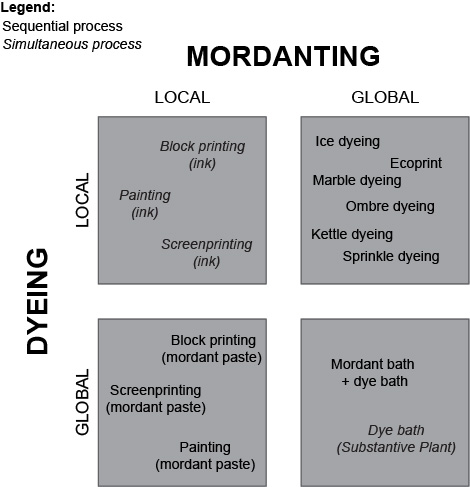
Complete Dyeing Process¶
Mordanting and applying color are only two steps in a more complex process, one that involves a lot of patience. Let's take dye baths as an example:
WEIGHING SCOURING TANNING MORDANTING DYE BATH NUANCING RINSE
Weighing¶
Even though natural colors are hard to control and replicate, it's still very important to be precise when considering the proportions of different ingredients. The first step is to weigh the dry substrates (fabric, yarn, raw wool...). This measure is referred to as WOF (Weight Of Fibers) and will be used as a basis for all subsequent calculations.
Scouring¶
to receive color, fibers need to be opened hard to get raw fibers locally, generally buy them already prepared "apprêt" (primer?) already applied, which prevents color to bind with the fibers many baths with savon de marseille are necessary to get the fiber back in its natural state, can take months Lessive de cendre (wood ash, prepared from sumac, oak, walnut, chestnut tree...) is very good for preparing cellulosic fibers to be dyed To make it you soak ash in water for several hours then filter out the solids Very basic (alkanine) so toxic for human Problem is that woods contain tannins, which dyes the fibers. Goal is to find woods that don't dye fiber a lot. Oak has a lot of tannins but doesn't dye a lot so it's the best, walnut colors too much Sap trees are too acid Never take a fabric just bought and try to dye it
Tanning¶
For cellulosic fibers you do a tannin bath before the mordanting Tannins add nuances to the fibers, they have a color ; without tannins, colors have bad lightfastness on cellulosic fibers Add protein to the fiber (so used on cellulose fibers and not animal fibers because they already have a lot of protein) Gall nut (noix de galle) very concentrated in tannins, 50% tannins, and don't color much (a little off white) Tannin bath left to heat for about an hour 30% plant or 10% tannin extract for the weight of the fibers for 100g fibers, need around 3 litres of water
Nuancing¶
Most biochromes are ph sensitive, colors can be changed by changing the pH
Rinsing¶
Practice¶
Dye baths¶
-
see info from Cecilia's slides*
-
schéma*
difference vat dye, mordant dye and direct dye? Vat Dyes are mostly for indigo
Substrates¶
For this experiment, we decided to use the same dye baths with three different fibers: cotton, linen, and silk.![^2] We cut about 25 rectangles of each and ended up with 384 g of linen, 350 g of cotton and 43 g of silk.
![^2]: We had originally planned on dyeing carded unspun wool as well, but the combination of the wool not being fully carded and the dye baths being sligthly too hot gave terrible results so we only tried it with a couple colors and then gave up on the idea.
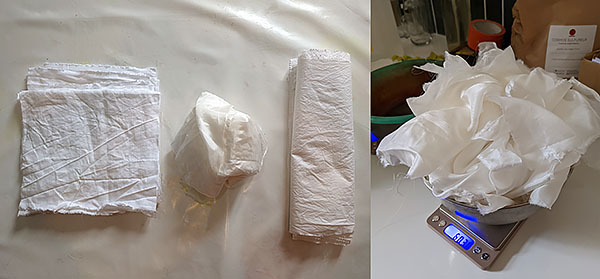
Tanning¶
Tannin Bath
* 10% WOF gallnut extract
* as much water as needed to cover the fibers and then more
Mordanting¶
Silk mordant while tanning bath for cotton and linen Then cotton and linen mordant
Mordant Bath
* 30% WOF potassium alum
* 5% WOF cream of tartar (potassium bitartrate)
* as much water as needed to cover the fibers and then more
Need to weigh the dry fibers first of all, and weigh the potassium alum Ratio depends of the result you want, how strong you want the color to be, but a good ratio in 20% to 30% Can also add some cream of tartar (5%) in addition to the alum for wool Leave to soak at 90° for 2 to 3 hours then air it and let it dry a bit
Dye baths¶
Dye Bath
* 100% (or more) WOF dried plants OR 10% (or more) WOF plant extract
* as much water as needed to cover the fibers and then more
Nuancing¶
Iron can be used as a mordant but also to add nuances to color, for instance with yellow dye it'll create green Tannin+iron reaction becomes instantly very dark Gall nuts with iron will already make a black color
The recipe here is the same one given earlier for the Iron Bath.
Results¶
I compiled the results of the different dye baths on all three substrates in a giant table:
Dye results on various fabrics
| Ratio | Duration | Nuance | Duration 2 | Cotton | Linen | Silk | |
|---|---|---|---|---|---|---|---|
| Madder | 20% | 1 h 30 | 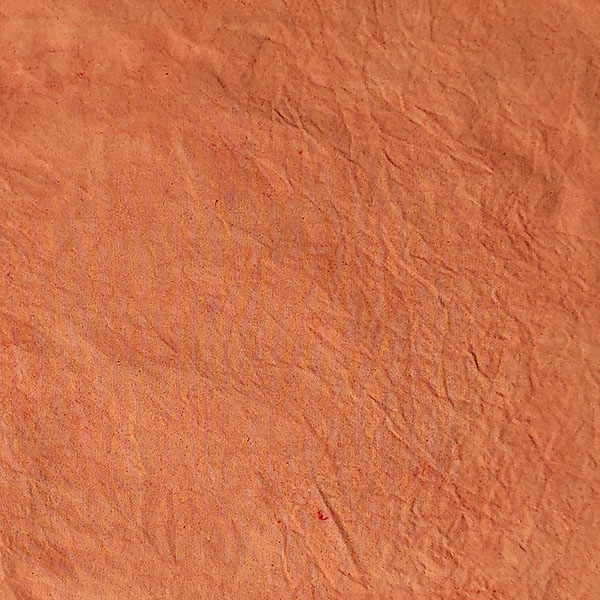 |
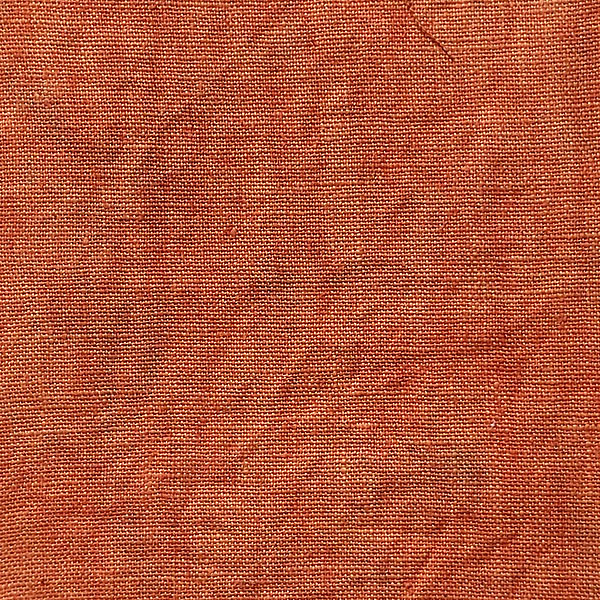 |
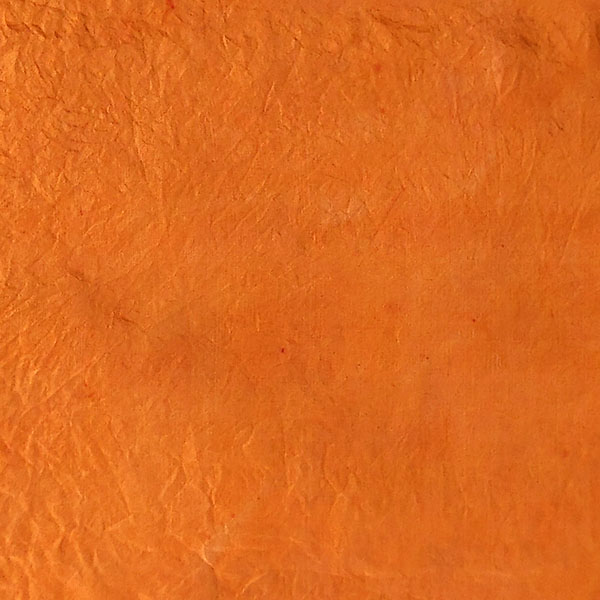 |
||
| 50% | 1 h | 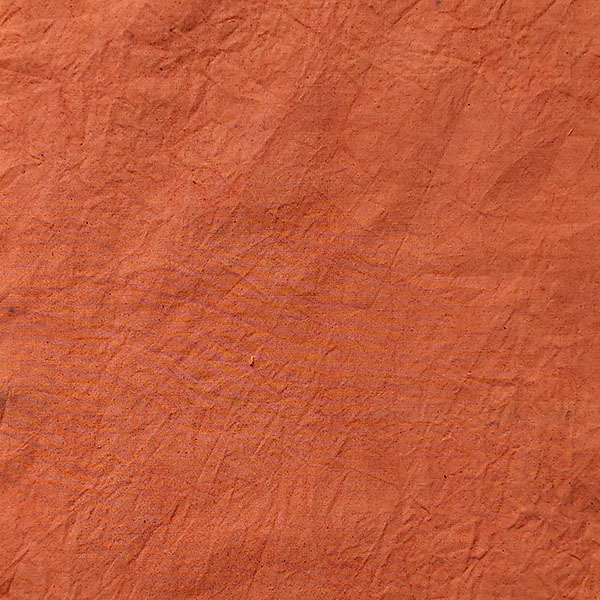 |
 |
 |
|||
| 300% | 1 h | 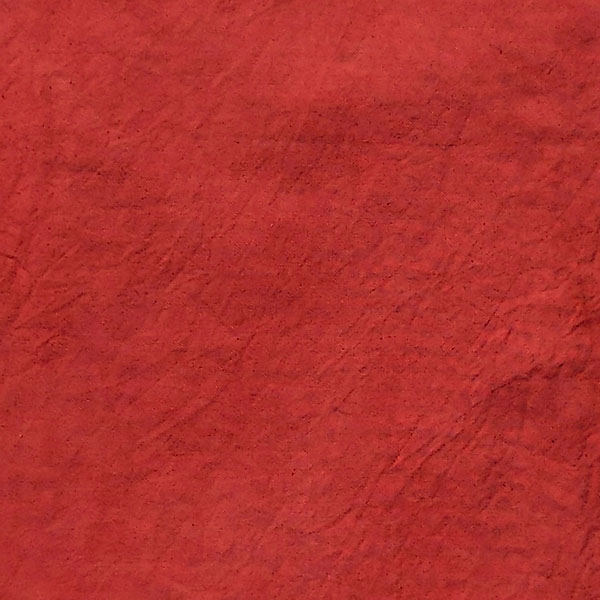 |
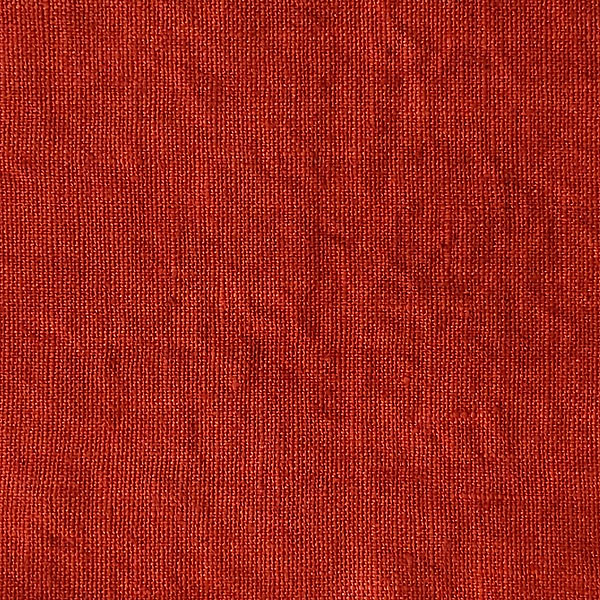 |
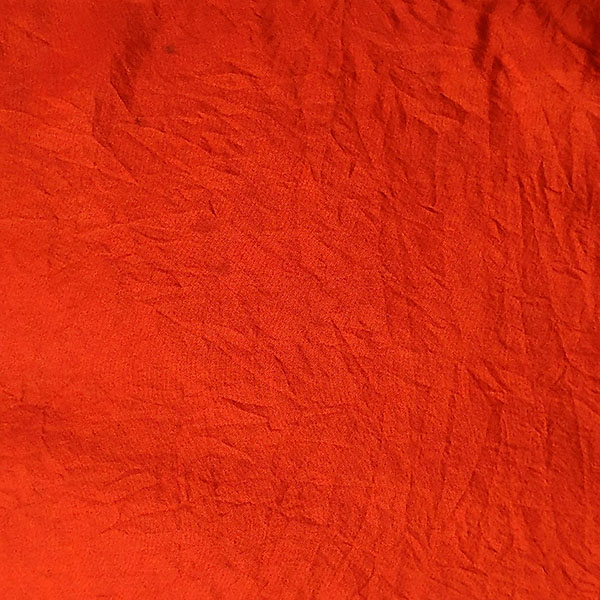 |
|||
| 30 min | + Logwood 50% | 45 min |  |
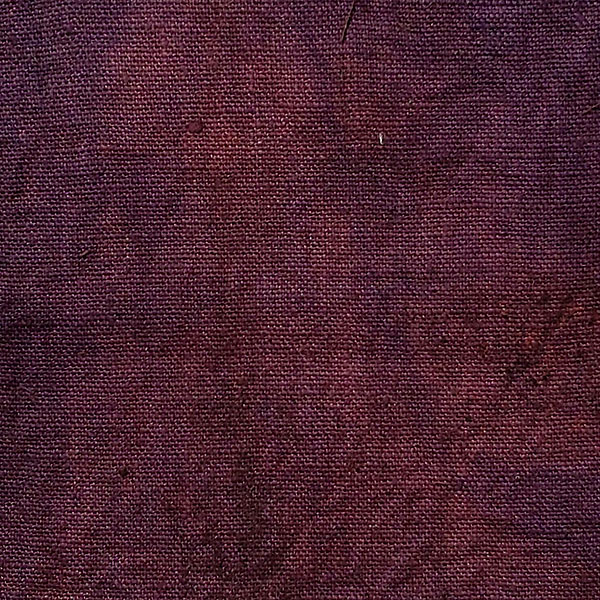 |
 |
||
| Reseda | 10% | 1 h | 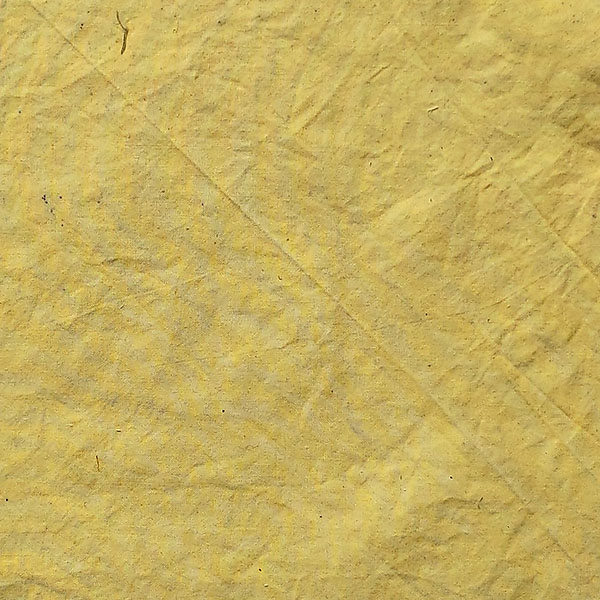 |
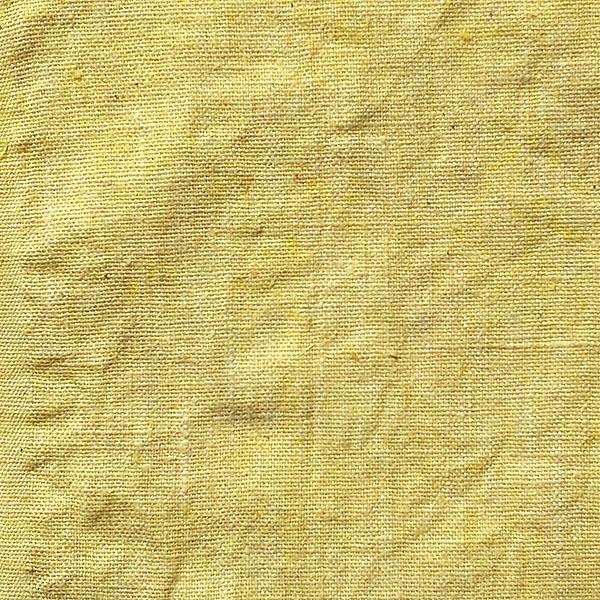 |
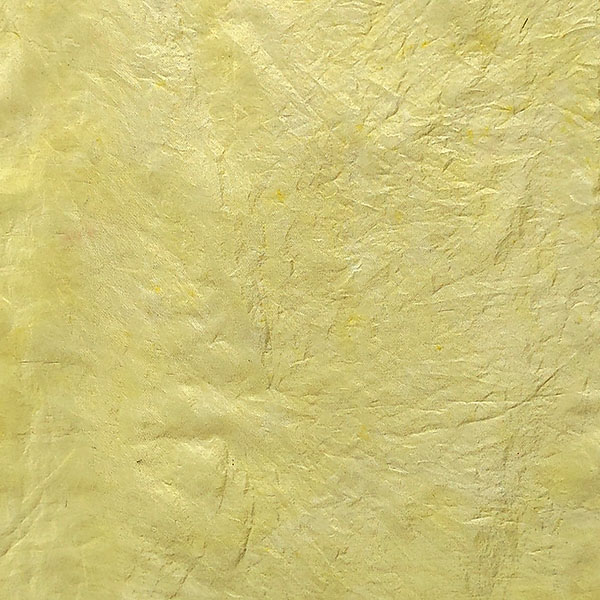 |
||
| 50% | 1 h | 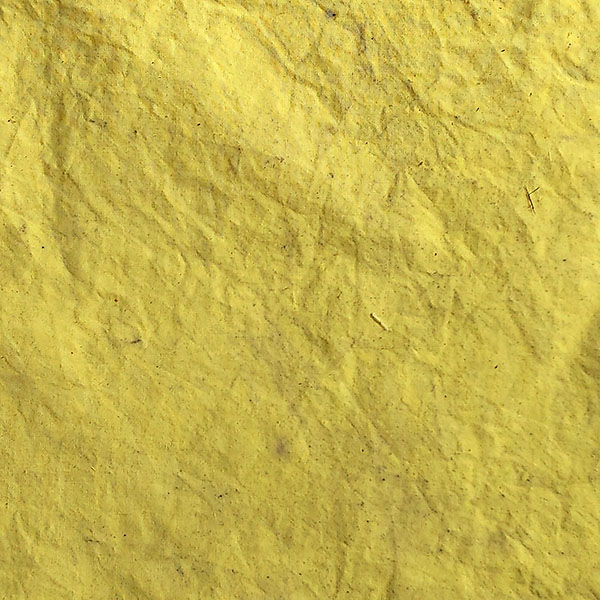 |
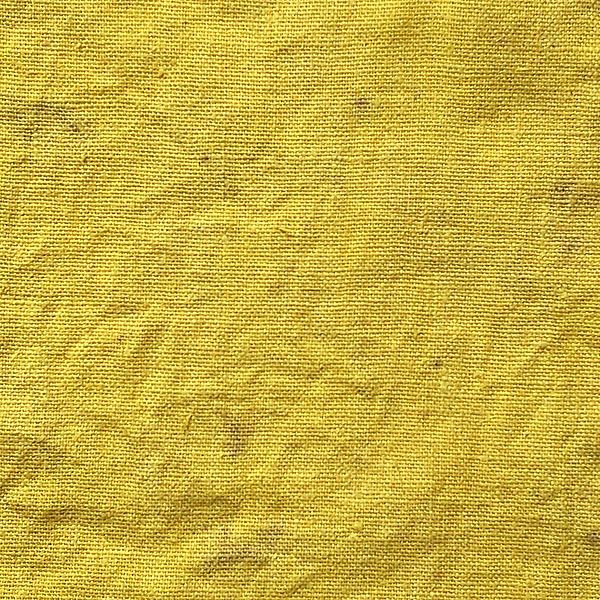 |
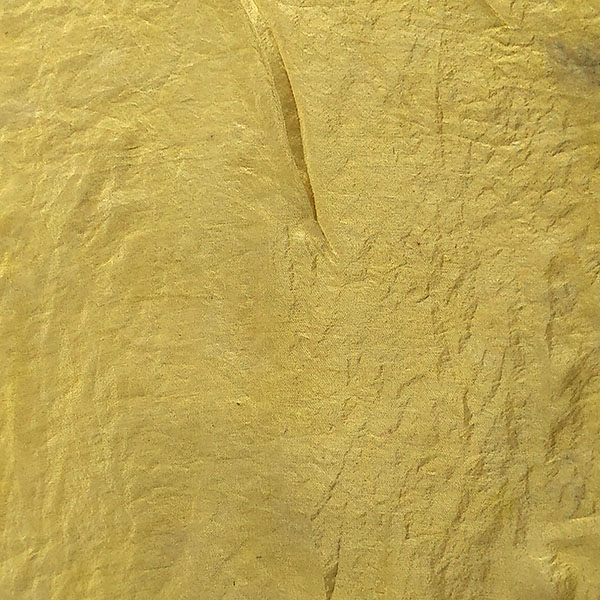 |
|||
| 40 min | + Iron 10% | 10 s |  |
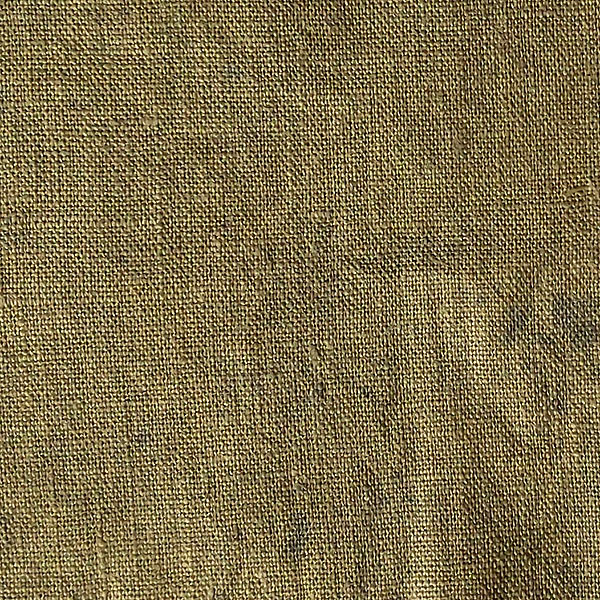 |
|||
| 40 min | + Madder 150% | 40 min |  |
 |
 |
||
| 150% | 1 h | 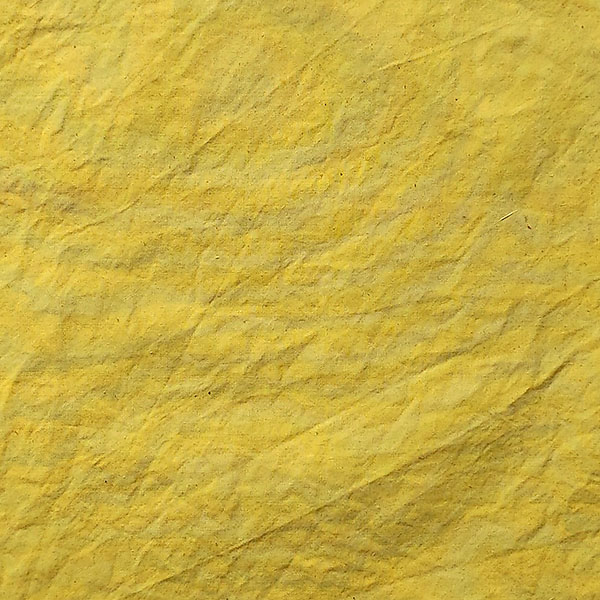 |
 |
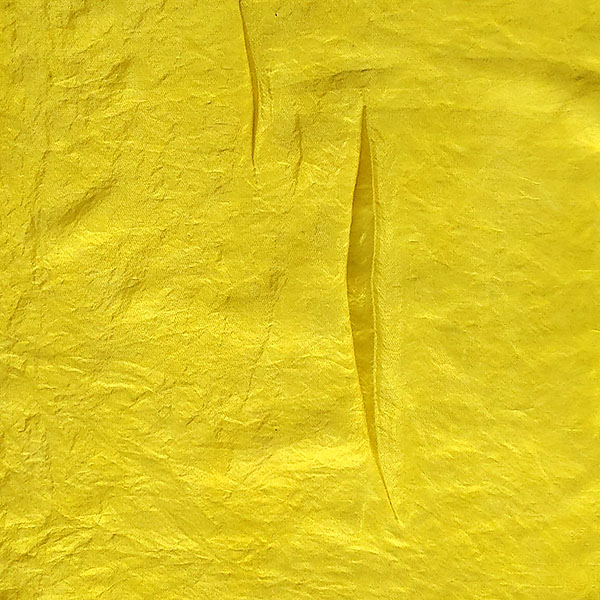 |
|||
| Logwood | 12% | 40 min | 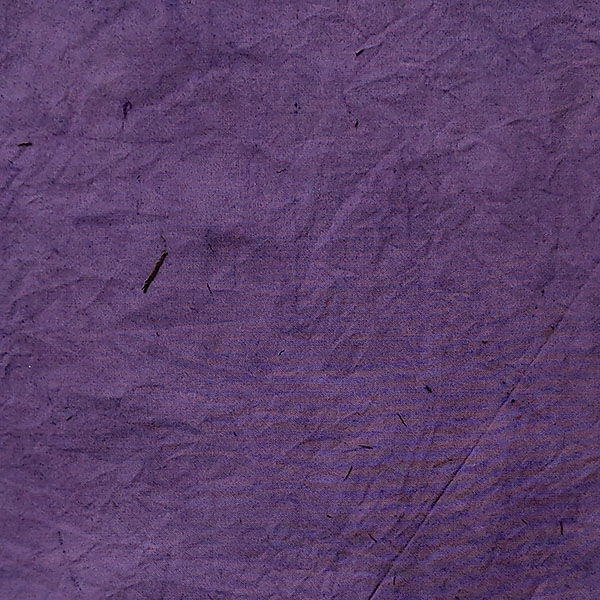 |
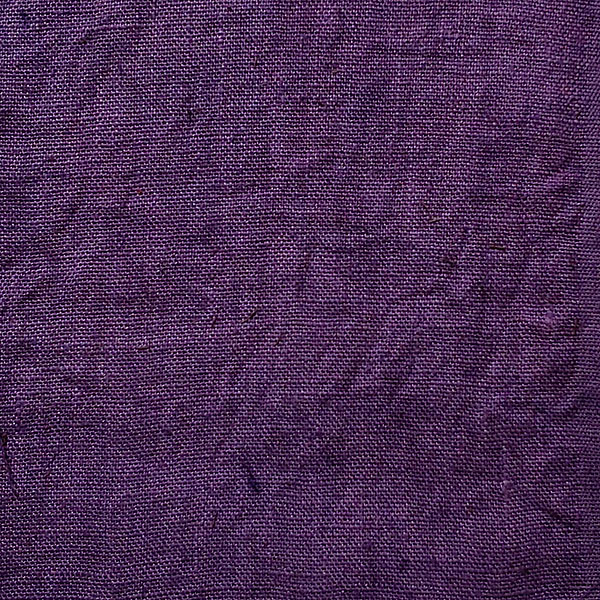 |
 |
||
| 50% | 1 h |  |
 |
 |
|||
| 150% | 1 h | 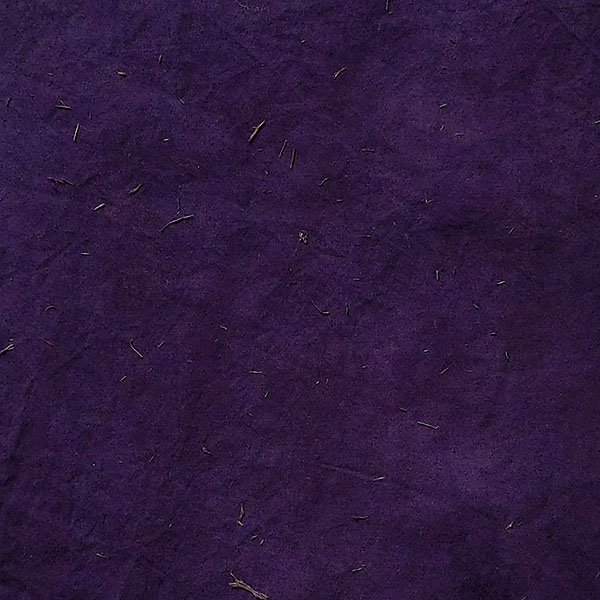 |
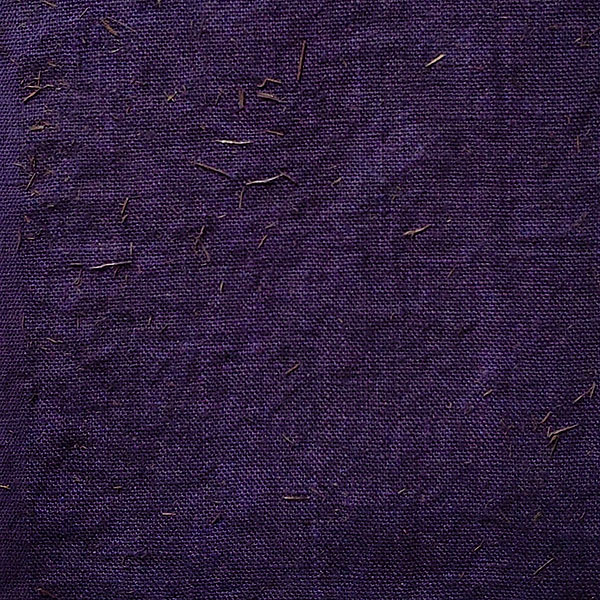 |
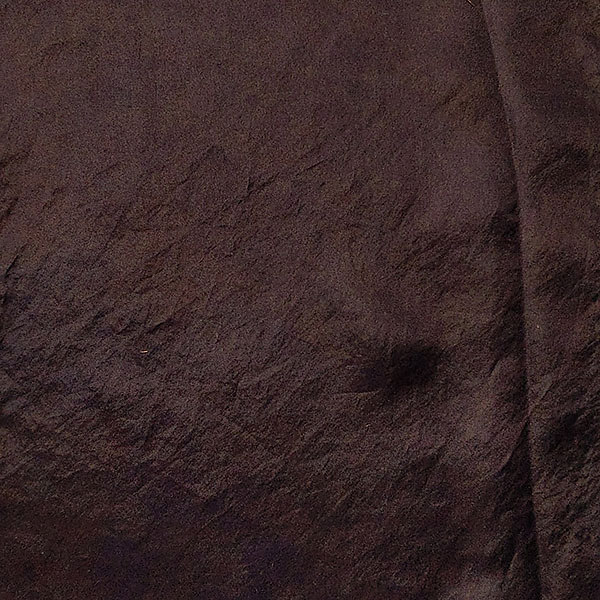 |
|||
| Onion | 50% | 1 h | 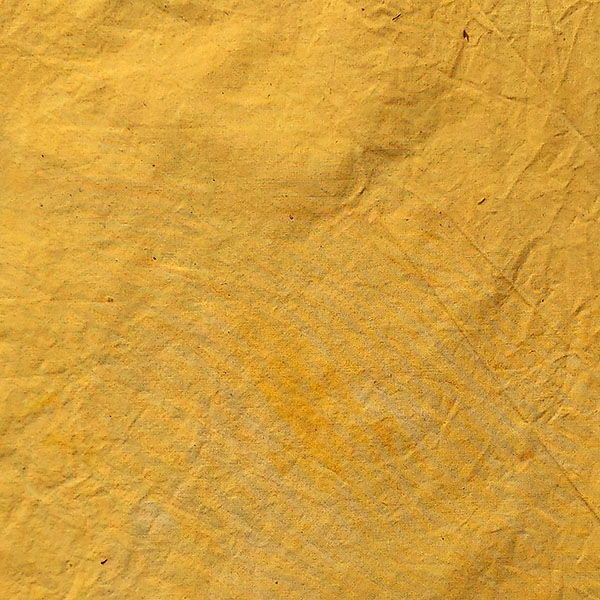 |
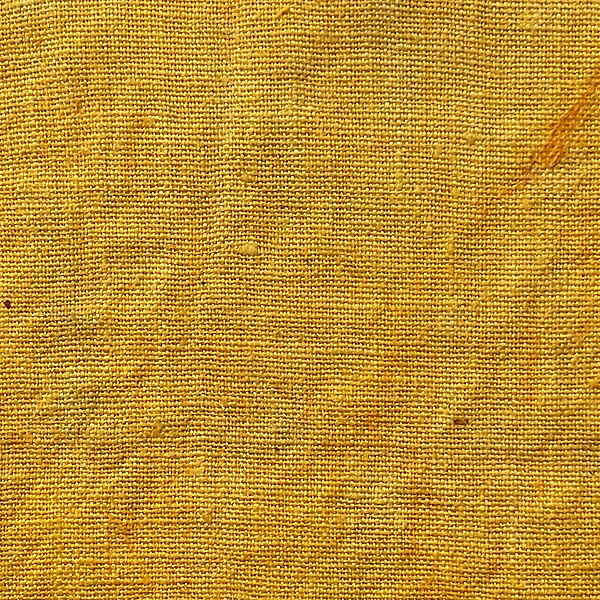 |
 |
||
| 30 min | + Iron 10% | 10 s | 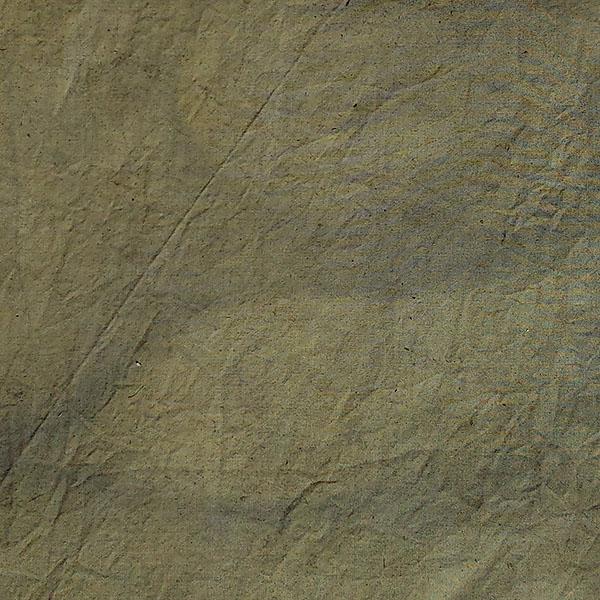 |
 |
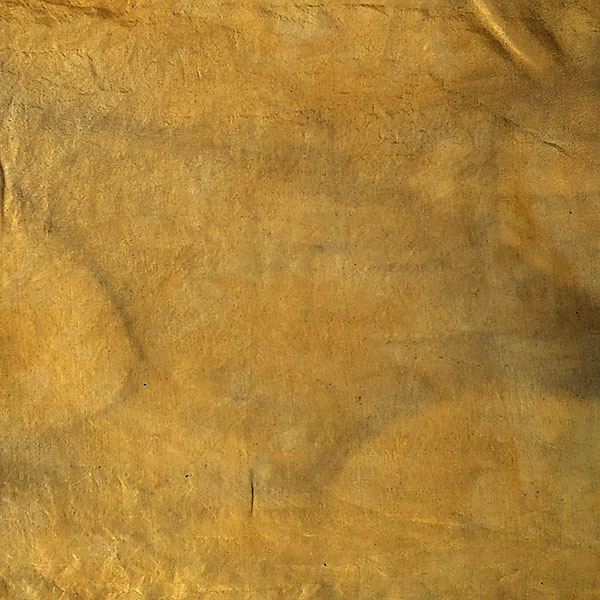 |
||
| Goatweed | 100% | 1 h | 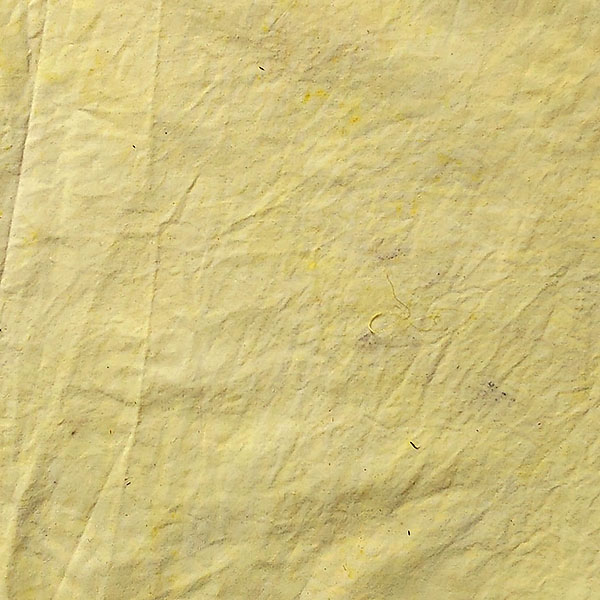 |
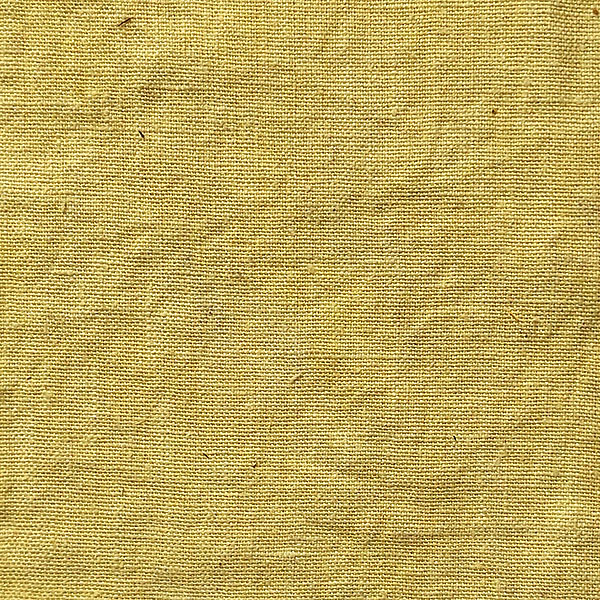 |
 |
||
| 30 min | + Iron 10% | 10 s | 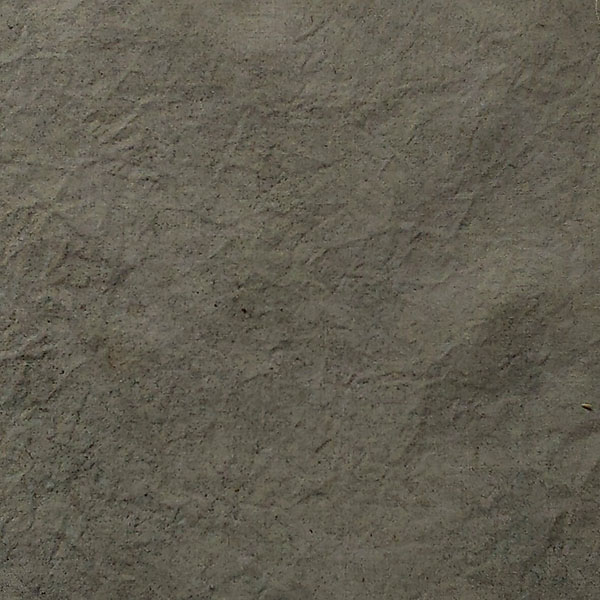 |
 |
|||
| Sandalwood | 50% | 1 h 30 |  |
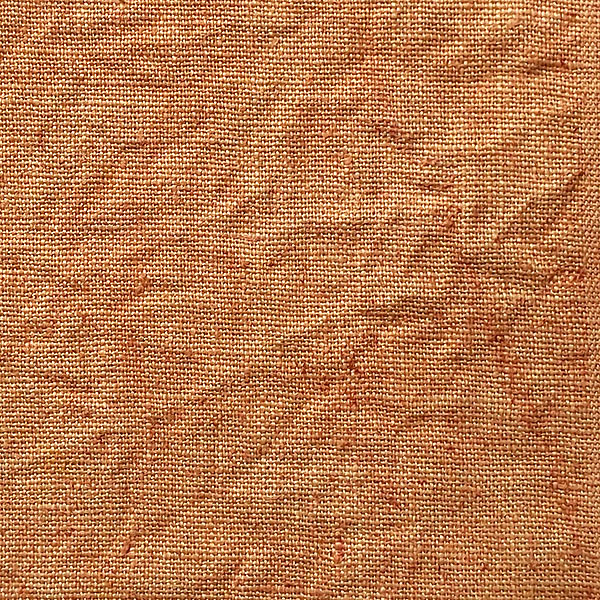 |
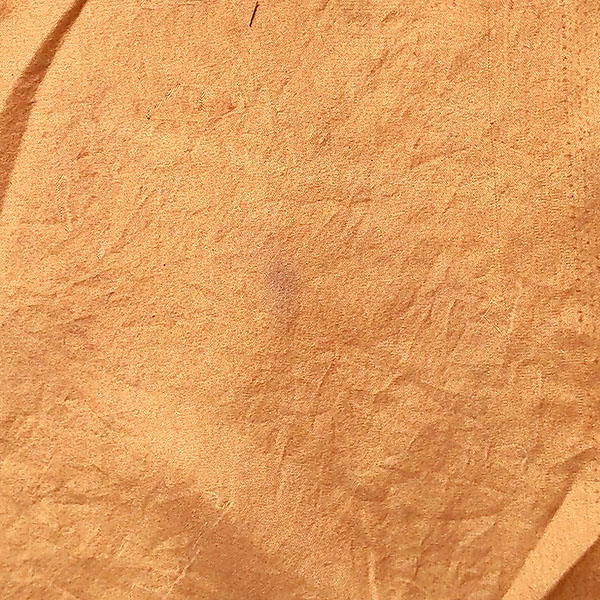 |
||
| Pomegranate peel | 50% | 30 min | + Iron 10% | 10 s |  |
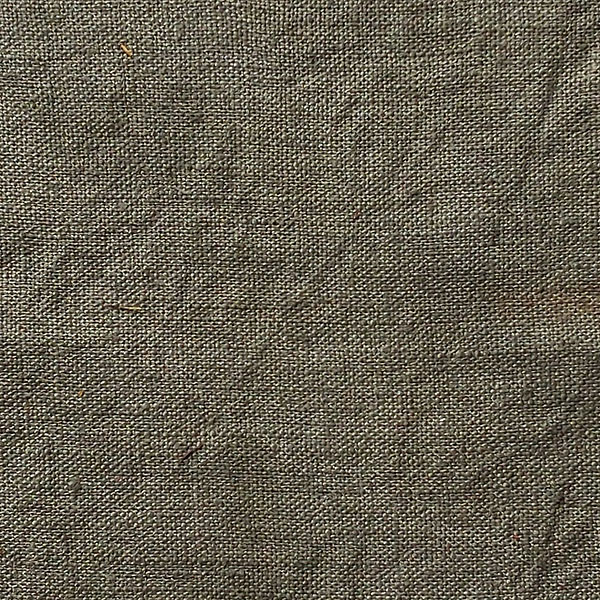 |
|
| Walnut husk | 1000% | 1 h | 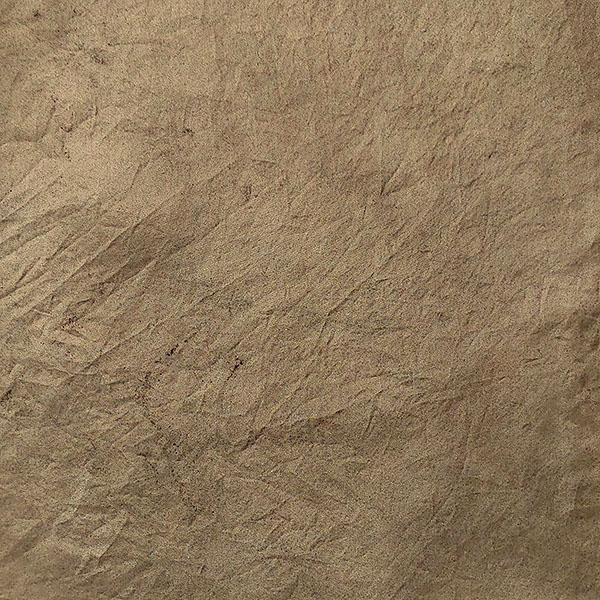 |
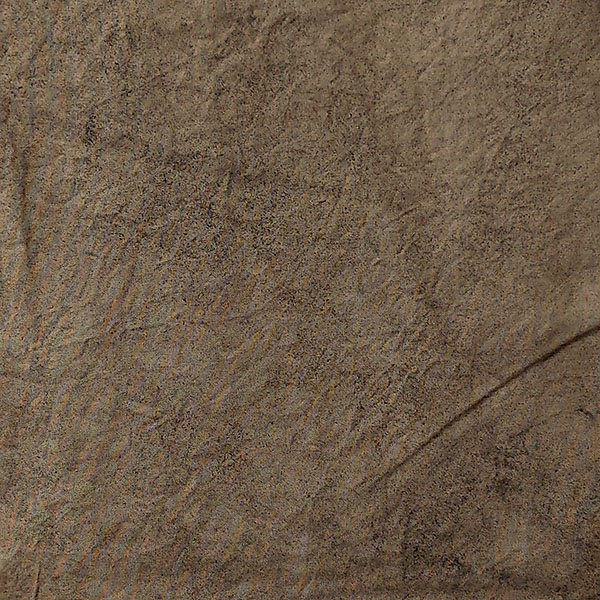 |
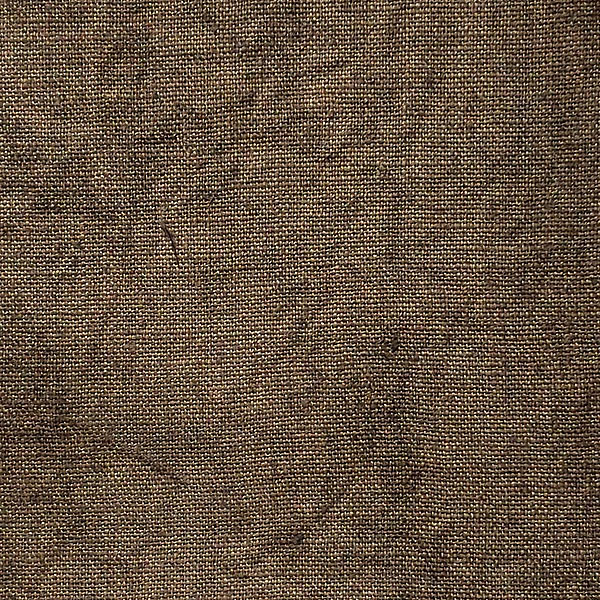 |
||
| Gallnut | 30% | 1h | + Iron 10% | 15 min | 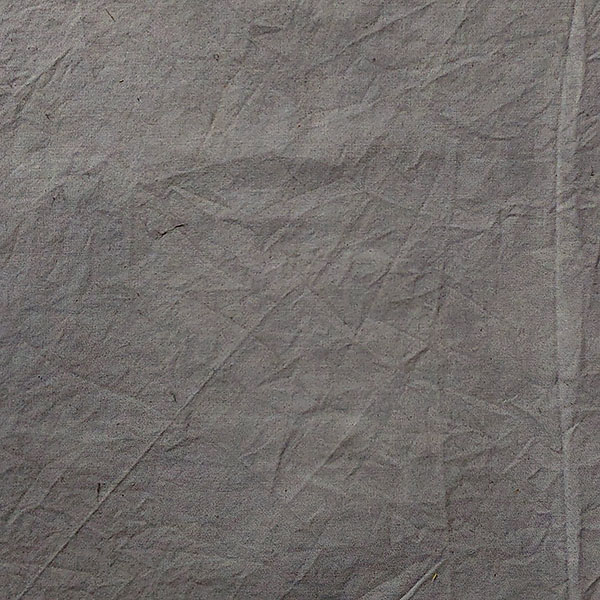 |
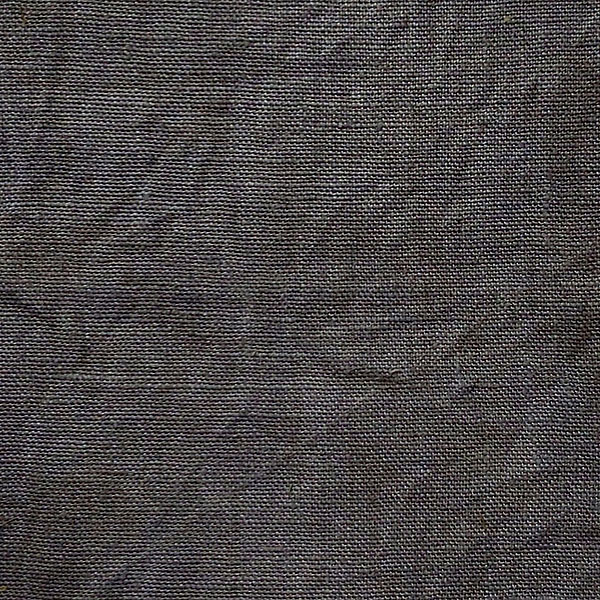 |
I also organized my physical samples in a similar fashion:
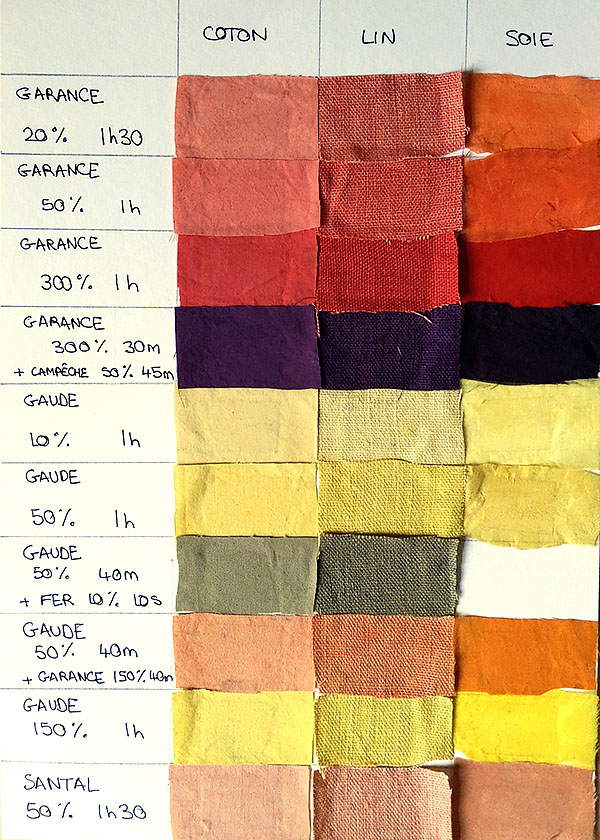

I particularly love the deep, rich red of the highly concentrated madder, all the beautiful purples of the logwood, the deep grey of gallnut + iron, and the subtle, nuanced green of the onion skin + iron.
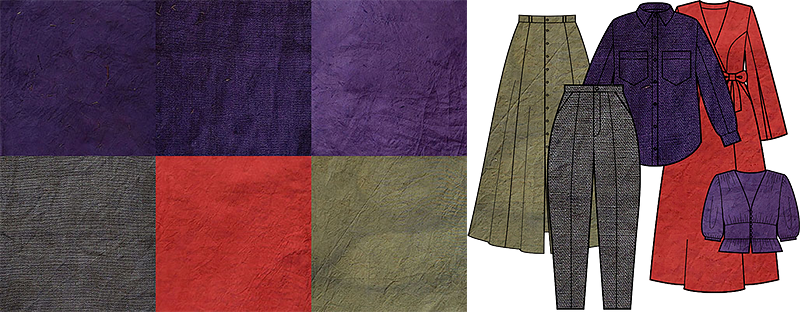
We didn't have time this week but I would have loved to do some controlled testing on the fabric samples to see how to color would react to various conditions. Here are a few tests that can be done:
- Lightfastness test: leave a control sample in the dark and a test sample in the sun for 12 days
- Washfastness test: wash the test sample with dishsoap
- Rubbing fastness: rub the test sample by hand for 10 minutes
Mordant paste¶
For our second dyeing experiment, Charlotte showed us how to make motifs using a printing paste, a technique originally from India (unfortunately I don't know its name so I could not find a reference).
Making the paste¶
For mordant, we made two types of acetate: aluminum acetate and ferric acetate. Acetate is made by mixing the mordant powder in vinegar, then adding soda crystals to help it dissolve. Acetate could be made with potassium alum, but in this case we replaced it with aluminium sulfate, which is easier to dissolve.
Acetate
* 1 l of 10-12% white vinegar
* 60 g aluminium sulfate
* 50 g soda crystals
1. Pour the vinegar into a tall beaker
2. Add the aluminium sulfate
3. Add the soda crystals - the acid-base reaction will make it foam
4. Mix until everything is dissolved
* 1 l of 10-12% white vinegar
* 60 g ferrous sulfate
* 50 g soda crystals
1. Pour the vinegar into a tall beaker
2. Add the ferrous sulfate
3. Add the soda crystals - the acid-base reaction will make it foam
4. Mix until everything is dissolved
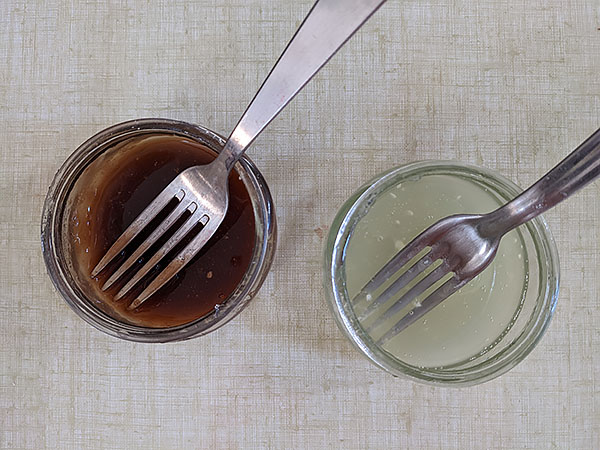
We then turned the acetate into a paste by adding thickener little by little until the consistency was close to the consistency of honey. We used guar gum, which is a good option for textile printing, but other thickening agents can be used for paper, such as agar agar or wax.
Applying the paste¶
This paste is applied to the fabric, then let it dry, the fabric will be like cardboard where it's printed
The print, made in mordant, will be invisible
At this point we can do a wheat bran bath for the fabric Removes the mordant surplus
Adding color¶
Then we dunk the fabric in a dye bath and the color will only hold where the mordant was applied
Results¶
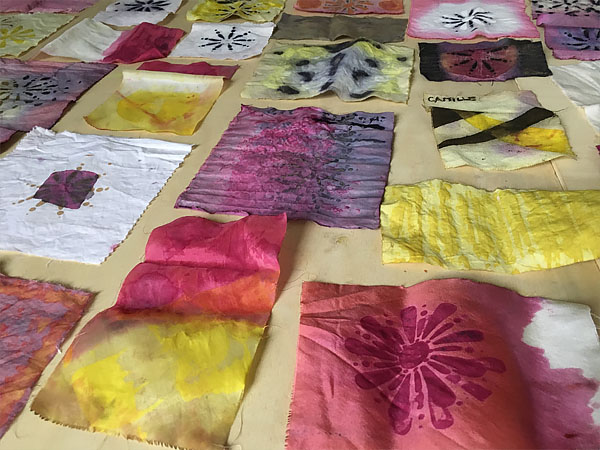
Ecoprinting¶
Process¶
Results¶
Pigments¶
Like dyes, pigments are a colorant, but while dyes bind to the material they're being applied to, pigments do not.
Inks¶
Inks are a dense liquid that can be dye-based or pigment-based, and are generally applied to a surface to create designs, images or texts. The process of using inks is similar to the use of mordant paste, except that the ink already contains the coloring molecules, so no color bath is needed.
Making the inks¶
....
Alternatively, we could have added color directly into the printing paste to create an ink.
Applying the inks¶
Results¶
0-Waste Natural Dyeing Journey¶
It's possible to use the leftovers of a coloring process to create a different type of colorant, as shown in Cecilia's "0-Waste Natural Colour Journey" diagram:

We kept everything to reuse in the Bio Materials week
Non-vegetal Color sources¶
Animal Color Sources¶
The exploitation of animals to create fibers (silk, leather...) is controversial, and unsurprisingly such is their use to produce color.
In particular when it comes to endangered species
https://en.wikipedia.org/wiki/Tyrian_purple Story of the Tyrian Color and Murex Snails
Some are still used though because they produce beautiful colors, like cochenille
Fungal Color Sources¶
Dyeing with molds and mushrooms
Bacterial Color Sources¶
Pauline and Diane had planned to give us an introduction to dyeing with bacteria, but unfortunately it had to be cancel because the bacteria were not cooperating. Hopefully we can reschedule it later this year, because I am very curious about this process. If it works out, I'll update this section with the results.
-
Some plants, called plantes substantives, contain oxalic acid that binds to the protein in animal fibers. Rhubarb root (yellow), rumex (yellow), and eucalyptus (orange) are substantive plants. They can be used by themselves, or be used as mordants for other colors. However, they are not used a lot, and only act as a mordant for animal fibers, not for cellulosic fibers. ↩
